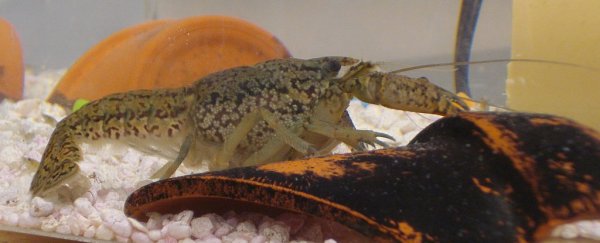A crayfish that is capable of cloning itself is taking over Europe – and scientists are taking note.
The marbled crayfish has a mutation that allows it to clone itself, reports Carl Zimmer at The New York Times.
Zimmer profiled scientists studying the all-female species known for its massive size, which "simply did not exist" 25 years ago.
The crayfish first became popular with aquarium owners because of their size and ability to lay copious amounts of eggs.
"As marmorkrebs became more popular, owners grew increasingly puzzled. The crayfish seemed to be laying eggs without mating," Zimmer writes.
Scientists soon discovered the genomic mutation, which has allowed the species to number in the millions. Zimmer does a great job of explaining how that works.
While the crayfish have never been seen in the wild in America, they are popular among hobbyists. They're banned in Missouri and Tennessee.
The European Union also banned the species from being produced, distributed, or released in the wild.
Madagascar, where the crayfish are thriving, has become concerned about the size of the population.
"There are a lot of clear advantages to being a clone," Zimmer writes. "Marbled crayfish produce nothing but fertile offspring, allowing their populations to explode."
It's unclear how long the population will be able to thrive.
People on Twitter were freaking out about the discovery.
Attack of the clones! No, this isn’t Star Wars, this is an invasive species of crawfish that can clone itself.... https://t.co/d76QeXQBAg
— TWILA TV (@TWILATV) February 5, 2018
This is WILD. A single mutation 25 years ago created an all-female species of crayfish that reproduces asexually in huge numbers, and they are literally taking over the world: https://t.co/znx6rsFIXp
— Laurie Voss (@seldo) February 6, 2018
This article was originally published by Business Insider.
More from Business Insider:
